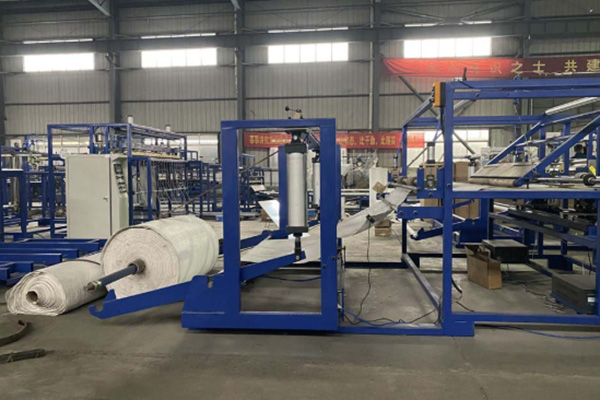In the world of bulk packaging, Flexible Intermediate Bulk Containers (FIBCs)—commonly known as bulk bags or big bags—play a crucial role in storing and transporting dry flowable products such as grains, powders, plastics, and chemicals. An essential part of the FIBC manufacturing process is the cutting of woven polypropylene fabric, the primary material used to construct these bags. One of the most efficient tools used in this process is the Cross FIBC Fabric Cutter.
This specialized machine is designed for precision, speed, and consistency, making it a key component in modern bulk bag production. In this article, we explore what a Cross FIBC Fabric Cutter is, how it works, its advantages, and its role in enhancing the quality and efficiency of FIBC manufacturing.

What Is a Cross FIBC Fabric Cutter?
A Cross FIBC Fabric Cutter is an automated or semi-automated cutting machine designed specifically to cut woven polypropylene (PP) or polyethylene (PE) fabric used in the construction of FIBCs. The term “cross” refers to the crosswise (horizontal) cutting action that slices the fabric perpendicular to its roll direction.
These machines are typically used in conjunction with fabric unwinding and rolling systems. They can cut fabric sheets to exact dimensions for different parts of the bag—such as the body, side panels, or base panels—with high accuracy and minimal material waste.
How Does It Work?
The Cross FIBC Fabric Cutter works through a series of coordinated steps:
-
Fabric Feeding: Rolls of woven PP or PE fabric are loaded onto the machine. An automatic feeding system unrolls the fabric and guides it onto the cutting bed.
-
Length Measurement: A precision sensor or encoder measures the length of fabric to be cut, ensuring each sheet matches the programmed dimensions.
-
Cutting Mechanism: A heated blade or rotary knife moves across the fabric crosswise to create a clean, straight cut. Some models use hot cutting technology, which simultaneously cuts and seals the edges to prevent fraying.
-
Stacking or Rolling: After cutting, the fabric panels are stacked or rolled for easy transfer to the next stage of production—typically printing, laminating, or sewing.
Advanced versions of Cross FIBC Fabric Cutters may include touchscreen interfaces, programmable settings, and integrated sensors for detecting fabric tension and alignment.
Key Features and Benefits
1. High Precision
The machine can cut to exact specifications, which is essential for maintaining consistency in the dimensions of the FIBC panels. Precise cuts help ensure a tight fit during sewing and improve the overall strength and integrity of the bag.
2. Speed and Efficiency
Compared to manual cutting, a Cross FIBC Fabric Cutter dramatically increases production speed. This is especially important in large-scale manufacturing operations where thousands of bags may be produced daily.
3. Reduced Material Waste
By delivering clean, accurate cuts, the machine minimizes fabric wastage—saving costs and reducing environmental impact.
4. Edge Sealing
With hot cutting options, the edges of the fabric are sealed as they’re cut, which prevents fraying and improves the durability of the final product.
5. Automation-Friendly
Modern fabric cutters can be easily integrated into automated FIBC production lines, reducing labor dependency and improving operational efficiency.
Applications in FIBC Manufacturing
The Cross FIBC Fabric Cutter is widely used in the production of various types of bulk bags, including:
-
Standard 4-panel FIBCs
-
Circular FIBCs
-
U-panel and baffle bags
-
FIBCs with liners or laminated coatings
It supports manufacturers in producing bulk bags used in agriculture, construction, chemical industries, food processing, and more.
Conclusion
The Cross FIBC Fabric Cutter is a vital tool in the bulk bag manufacturing process. By delivering accurate, clean, and efficient fabric cuts, it ensures that FIBCs are built to high standards of quality and durability. For manufacturers looking to enhance productivity, reduce waste, and improve consistency, investing in a reliable fabric cutter is a smart step toward a more efficient and competitive operation.
Post time: Jun-19-2025

